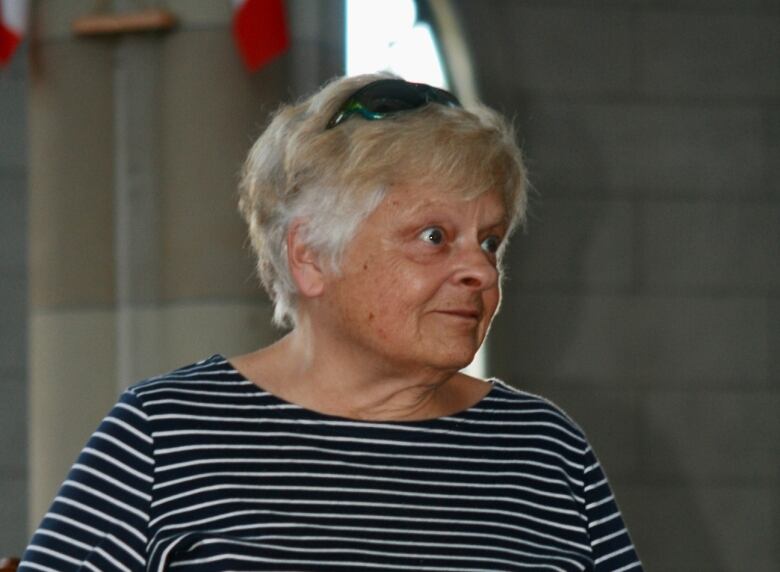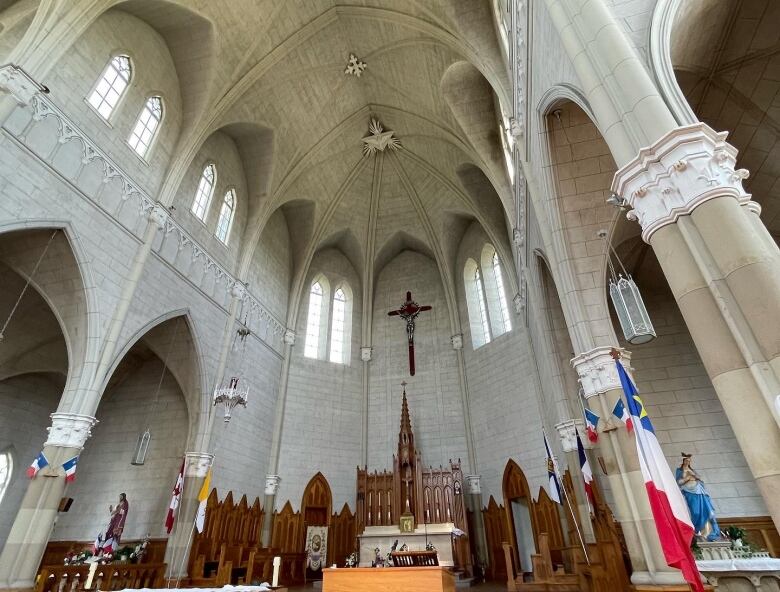'Very much part of us': Beloved St. Bernard Church set for deconsecration
Digby County church has seen attendance drop from thousands on a weekend to dozens

Louise LeBlanc grew up in the tiny community of St. Bernard, N.S., and remembers how the grand Gothic church was the pride of the Acadian community and at the centre of many milestones in her family.
"My sisters and brothers got married in the church," she said. "My little brothers and sisters were baptized in that church. It was really very much part of us."
With a dwindling population, falling attendance, and a building needing many repairs, those community traditions will come to an end Sunday as the landmark church is deconsecrated.
The purpose of deconsecration is to make the building not usable as a church or for profane use.
LeBlanc said she's expecting a flood of memories Sunday.
"I'm certainly going to look where our bench was in the church and where my whole family sat and thinking, you know, it's the passage of time," she said.

"I think for us as Acadians, we don't want to see the church go, but we also are very realistic and understand that there's no way a community of our size can keep the church going."
The idea for the church was conceived by local Edouard LeBlanc, who became the parish priest in 1907.

According to Louise LeBlanc, the priest had a "grandiose" idea of building a church that resembled European churches and got the community behind him.
The foundation stone for the structure was laid in 1910, and the community spent the next 32 years completing it.
A church booklet said over 8,000 blocks of granite were hauled by ox from Shelburne to the site over 20 years and cut using hand tools.
The imposing building is 65 metres long, 28 metres wide at the transept, and the apex of the gothic ceiling towers 21.5 metres above the ground.

Despite the ancient appearance of the building, the walls are supported by steel beams and what appears to be a stone ceiling is, in fact, plaster over a metal mesh.
"I guess there's such a sense of pride in that church...because the people built it," LeBlanc said.
"My grandfathers who were fishermen, who were farmers and other things, they actually came and did the masonry work and, and the hard blood, sweat, and tears to build that church."
During its heyday, LeBlanc said there were two masses on weekends with over a thousand people in attendance for each. By the time COVID-19 arrived, she said around 35 people were attending the one weekend mass.
In the years immediately before the pandemic, masses were held in the basement because it had become too expensive to heat the entire building, LeBlanc said.
She told CBC Radio'sInformation Morningon Friday that the small congregation simply could not afford the heating and repairs needed to keep the church going.
Today there are areas where the plaster covering the laths that make up the roof is collapsing as water seeps into the structure.

LeBlanc said it would cost millions to bring the church back to its original glory, and the decision was made after consulting with the Archdiocese of Halifax-Yarmouth.
Describing the church as a "centrepiece of the community," Rev. Robert Doyle, deacon at the Halifax archdiocese, said it was a sad day and that deconsecrating the church was not an easy decision.
Doyle said there would be a liturgy that the people in the area could attend. In the end, the people will leave, and the doors will close.
"Any religious items that can be removed will be removed," Doyle said.

"The altar itself would not necessarily be removed during the liturgy, but soon afterward, it would be removed from the church or destroyed. If it's a fixed item, that will be destroyed so it cannot be used again."
He said sacred items like statues will be removed.
LeBlanc is accepting of the church's fate.
"You can't think of the church as the religion," she said. " The church is a building. You just bring your religion to that church."
MORE TOP STORIES
With files from Information Morning Halifax












_(720p).jpg)


 OFFICIAL HD MUSIC VIDEO.jpg)
.jpg)



























































































